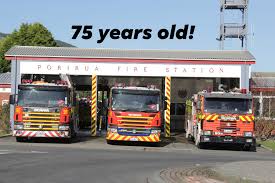Fire Safety Devices – Smoke Alarms
Each year, the New Zealand Fire Service attends over 3,500 house fires.
Many fire fatalities occur in homes at night when people are sleeping and don’t smell the smoke. In 80 per cent of the fatal house fires attended by the Fire Service there were either no smoke alarms, or no working smoke alarms.
Working smoke alarms are the best way to make sure you and your family get an early warning of a fire so you can get out alive.
Where should I put smoke alarms?
Smoke rises and moves along the ceiling. It will move up stairwells and vertical openings. When it can’t rise anymore it will build up, working its way down again. It’s because of this that it’s important to place smoke alarms on the ceiling to get the earliest warning. If you must position it on the wall put it 100mm away from the ceiling to avoid dead air pockets.
For better smoke detection, long life photoelectric smoke alarms should be installed in every bedroom, living area and hallway in the house – on every level. However, this is not always practical. That’s why we suggest, at an absolute minimum, that a long life photoelectric smoke alarm should be installed in the hallway closest to the bedrooms. This should be supplemented with other alarms as soon as circumstances permit.
The fire service recommends that smoke alarms are both interconnected and hardwired. Interconnected means when one smoke alarm detects a fire, all alarms throughout the house will sound even when they are on opposite sides of a closed door or on different levels of a house. Hardwired means the smoke alarms are connected to mains power thus not dependent on disposable 9v batteries. This makes them more reliable.
Where not to put them.
Don’t install smoke alarms in the kitchen, garage or bathrooms unless they are specially designed smoke alarms for those areas. Heat detectors are available for the kitchen.
What sort of smoke alarm should I install?
The New Zealand Fire Service recommends you install long-life photoelectric type smoke alarms in your home. They may be a bit more expensive, but the benefits are significant:
• they provide a minimum of 10 years smoke detection
• they remove the frustration of fixing the ‘flat battery beep’ at inconvenient times
• the cost of replacement batteries for standard alarms means the long-life one effectively pays for itself over its lifetime
• elderly don’t have to scale ladders to replace batteries annually
But, at a minimum, you should install one standard photoelectric alarm in the hallway closest to the bedrooms.
Visit www.youronlyvoice.co.nz for more information
information courtesy of Fire and Emergency New Zealand



 CHECK ITS ALRIGHT
CHECK ITS ALRIGHT